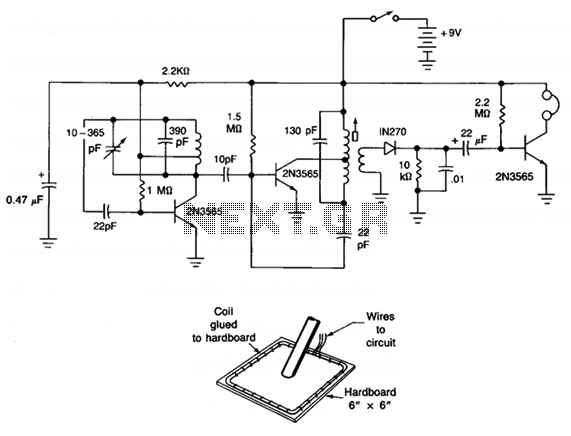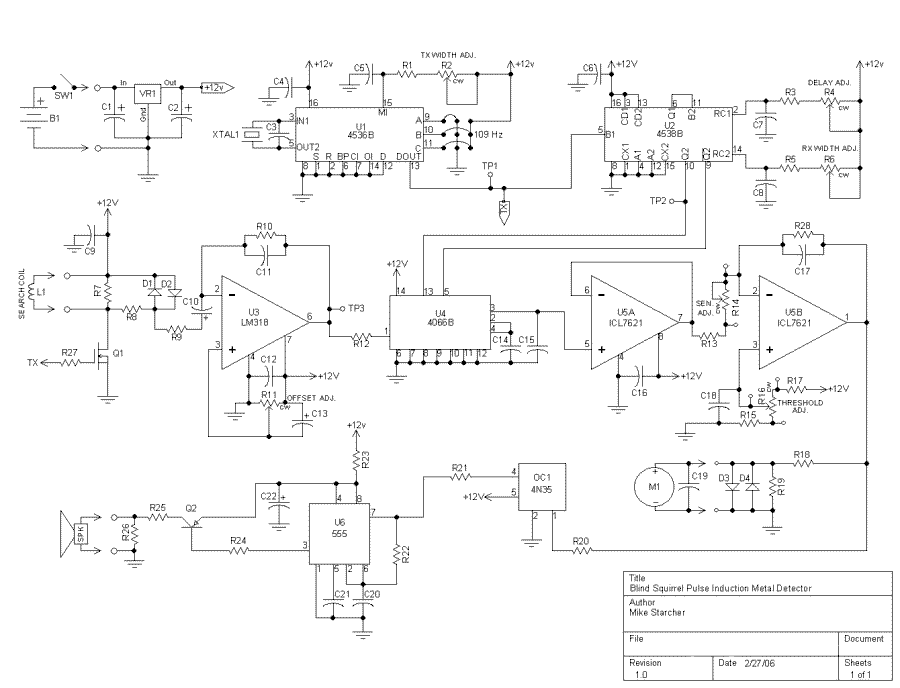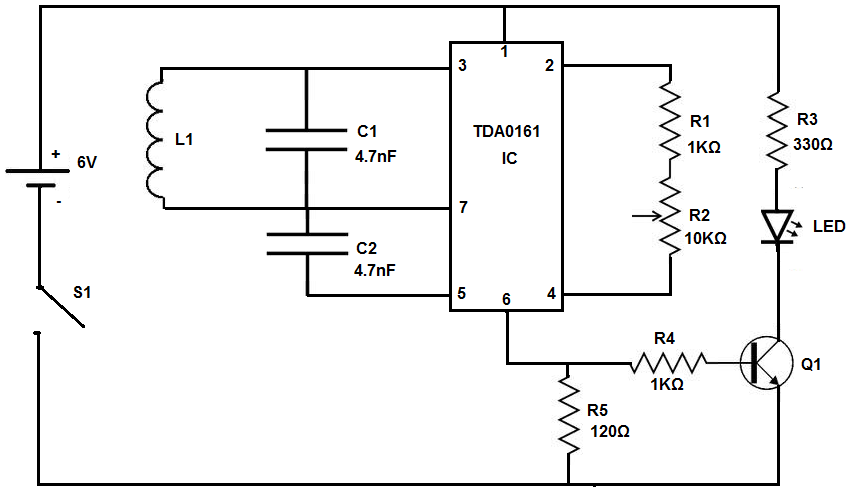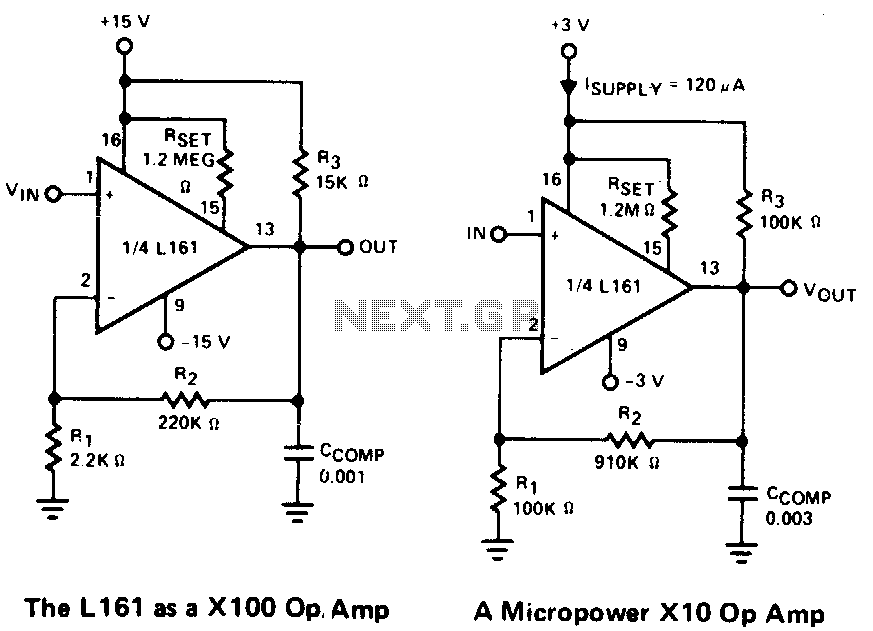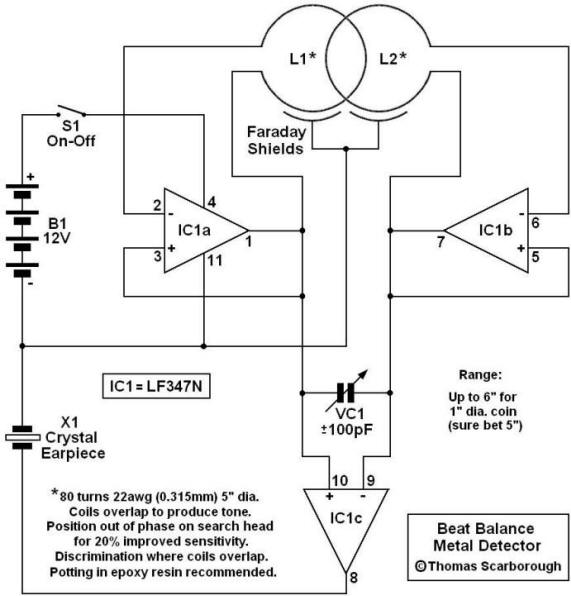
coil coupled operation metal
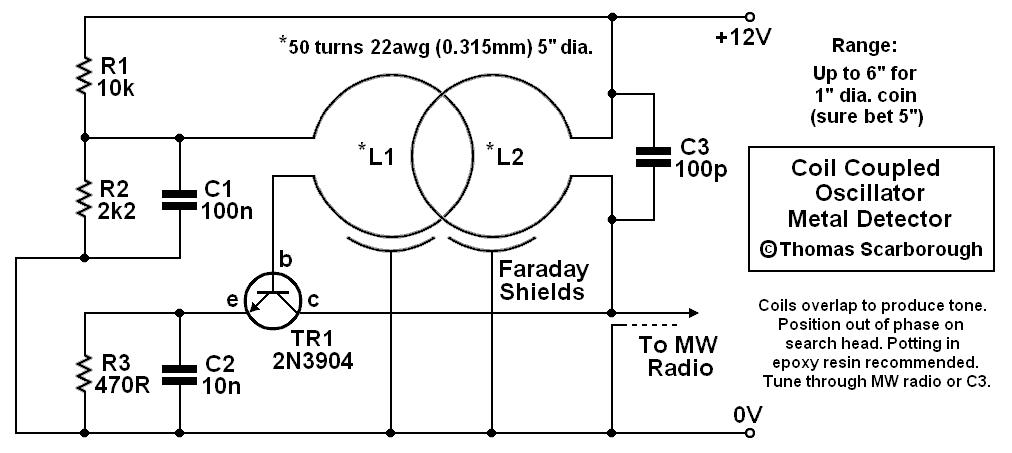
The metal detector presented may represent a new category in its field. After some exposure, it has been recognized as such by those familiar with it. This device is based on a standard transformer coupled oscillator (TCO), which is why it is referred to as a Coil Coupled Operation (CCO) Metal Detector. While it requires a Beat Frequency Oscillator (BFO) — in this case supplied by a Medium Wave radio — its performance significantly surpasses that of typical BFO detectors. Additionally, it relies on the balance of two coils to enhance sensitivity, distinguishing it from Induction Balance (IB) detectors, which utilize a passive receiver section. Furthermore, this design does not necessitate precise coil placement, unlike IB detectors. Similar to both BFO and IB designs, this metal detector offers discrimination capabilities. Experiments with various implementations of this concept indicate that it has the potential to rival the best IB detectors.
The Coil Coupled Operation (CCO) Metal Detector utilizes a transformer coupled oscillator (TCO) configuration, which is integral to its functionality. The TCO consists of a primary coil and a secondary coil, where the interaction between these coils generates an oscillating signal. This signal is modulated by the presence of metallic objects in proximity to the coils, allowing for detection.
The device's reliance on a Beat Frequency Oscillator (BFO) sourced from a Medium Wave radio enhances its detection capabilities, enabling it to operate effectively across various environments. The sensitivity of the detector is significantly improved through the careful balancing of the two coils, which is crucial for distinguishing between different types of metals and minimizing false positives.
Unlike traditional Induction Balance (IB) detectors, which employ passive components, the CCO design incorporates an active receiver section within the oscillator. This active configuration allows for better signal amplification and processing, resulting in superior detection performance. Additionally, the flexible coil placement in the CCO design simplifies the setup process, making it more user-friendly than its IB counterparts.
In terms of discrimination, the CCO Metal Detector is equipped to differentiate between various metal types, which is essential for treasure hunters and archaeologists seeking specific targets. The results from experimental iterations of this design suggest that it can achieve performance levels comparable to the most advanced IB detectors available on the market, thus marking a significant advancement in metal detection technology.The metal detector shown here may well represent a new genre. At any rate, after some exposure, it is regarded as such by those who have seen it. It is based on a standard transformer coupled oscillator(TCO) - hence the name Coil Coupled Operation (CCO) Metal Detector. Although requiring a BFO (in this case provided by a Medium Wave radio), it dif fers from a typical BFO detector in that its performance far outstrips that of BFO. Also, unlike BFO, it is dependent on the balance of two coils to boostsensitivity. It also differs from IB, in that its Rx section is an active, rather than passive, component of the oscillator. Further, unlike IB, the design does not require critical placement of thecoils. As with both BFO and IB, the design provides discrimination. Experiments with different embodiments of the idea have shown that it has the potential to match the best of IB.
Happy hunting! 🔗 External reference
The Coil Coupled Operation (CCO) Metal Detector utilizes a transformer coupled oscillator (TCO) configuration, which is integral to its functionality. The TCO consists of a primary coil and a secondary coil, where the interaction between these coils generates an oscillating signal. This signal is modulated by the presence of metallic objects in proximity to the coils, allowing for detection.
The device's reliance on a Beat Frequency Oscillator (BFO) sourced from a Medium Wave radio enhances its detection capabilities, enabling it to operate effectively across various environments. The sensitivity of the detector is significantly improved through the careful balancing of the two coils, which is crucial for distinguishing between different types of metals and minimizing false positives.
Unlike traditional Induction Balance (IB) detectors, which employ passive components, the CCO design incorporates an active receiver section within the oscillator. This active configuration allows for better signal amplification and processing, resulting in superior detection performance. Additionally, the flexible coil placement in the CCO design simplifies the setup process, making it more user-friendly than its IB counterparts.
In terms of discrimination, the CCO Metal Detector is equipped to differentiate between various metal types, which is essential for treasure hunters and archaeologists seeking specific targets. The results from experimental iterations of this design suggest that it can achieve performance levels comparable to the most advanced IB detectors available on the market, thus marking a significant advancement in metal detection technology.The metal detector shown here may well represent a new genre. At any rate, after some exposure, it is regarded as such by those who have seen it. It is based on a standard transformer coupled oscillator(TCO) - hence the name Coil Coupled Operation (CCO) Metal Detector. Although requiring a BFO (in this case provided by a Medium Wave radio), it dif fers from a typical BFO detector in that its performance far outstrips that of BFO. Also, unlike BFO, it is dependent on the balance of two coils to boostsensitivity. It also differs from IB, in that its Rx section is an active, rather than passive, component of the oscillator. Further, unlike IB, the design does not require critical placement of thecoils. As with both BFO and IB, the design provides discrimination. Experiments with different embodiments of the idea have shown that it has the potential to match the best of IB.
Happy hunting! 🔗 External reference
